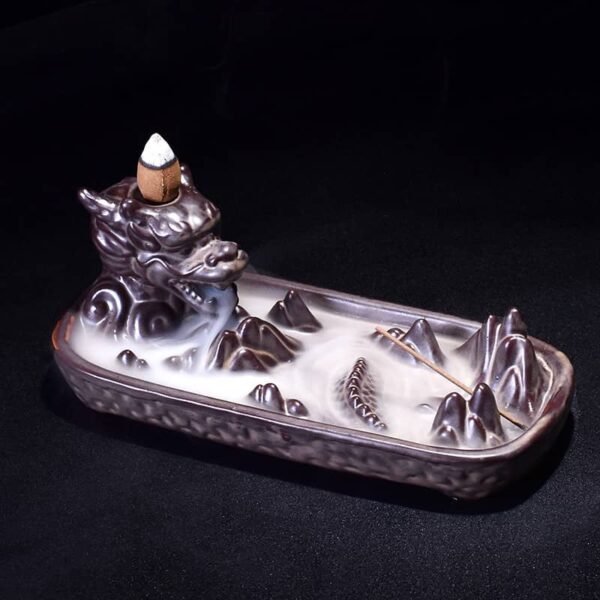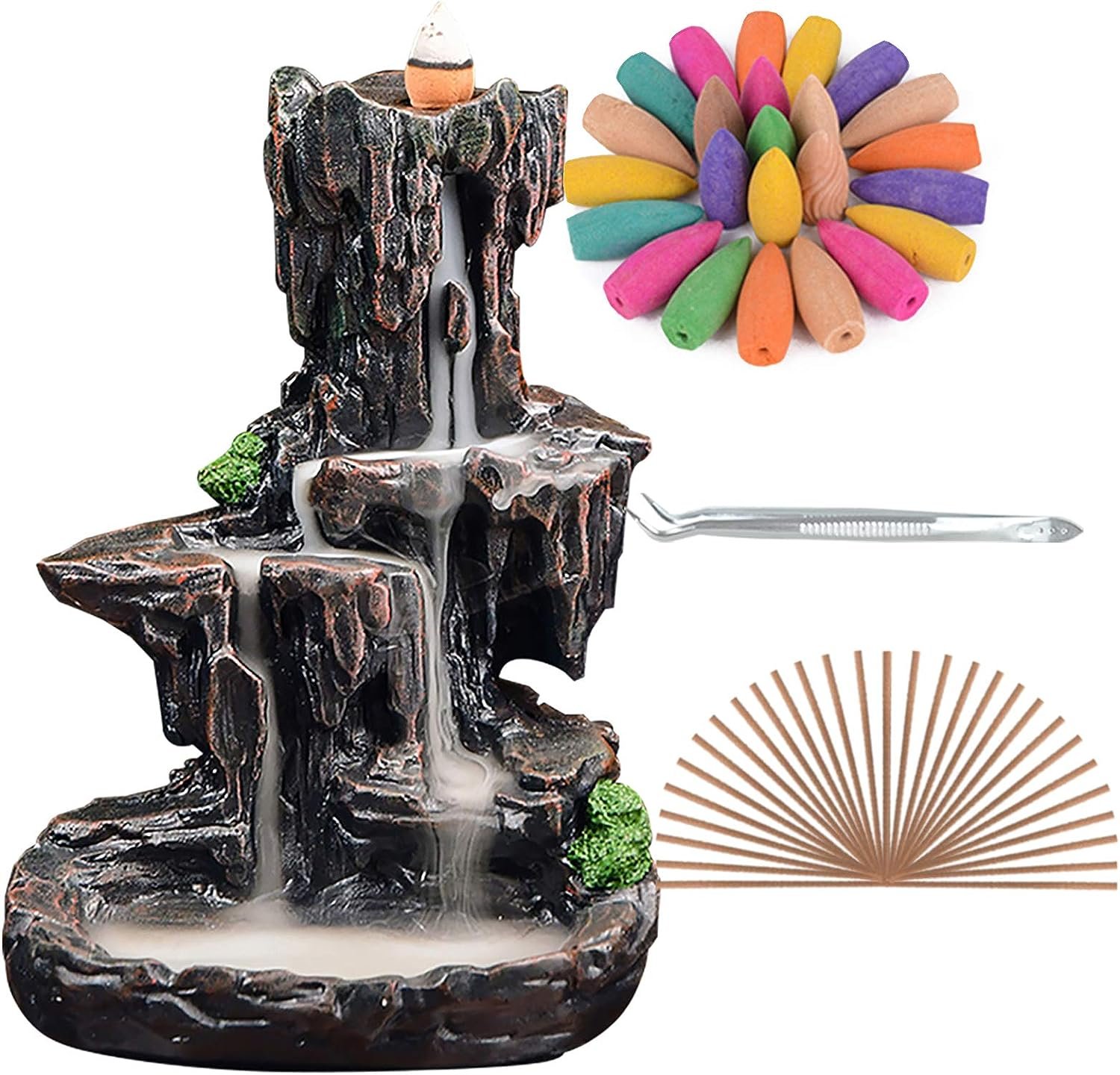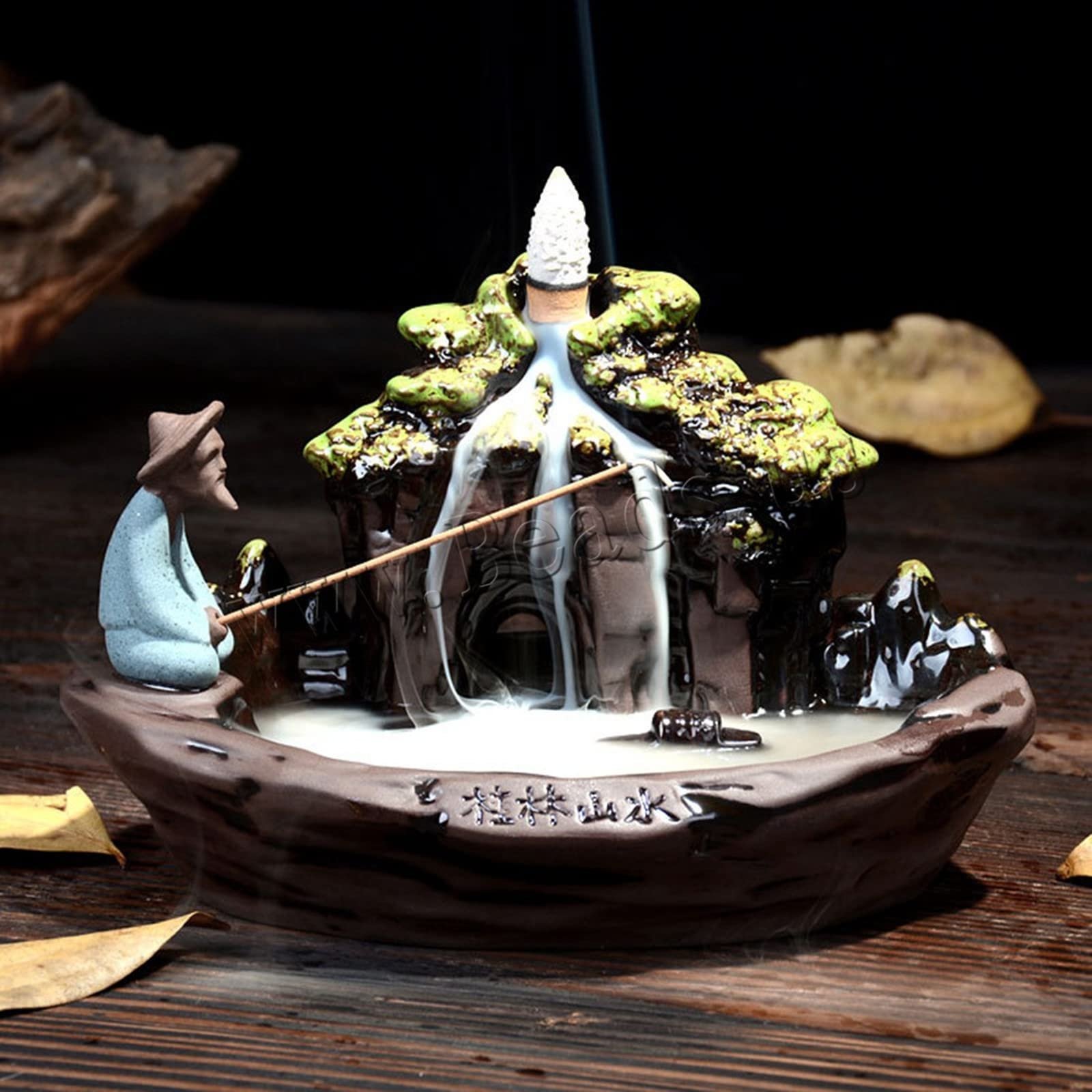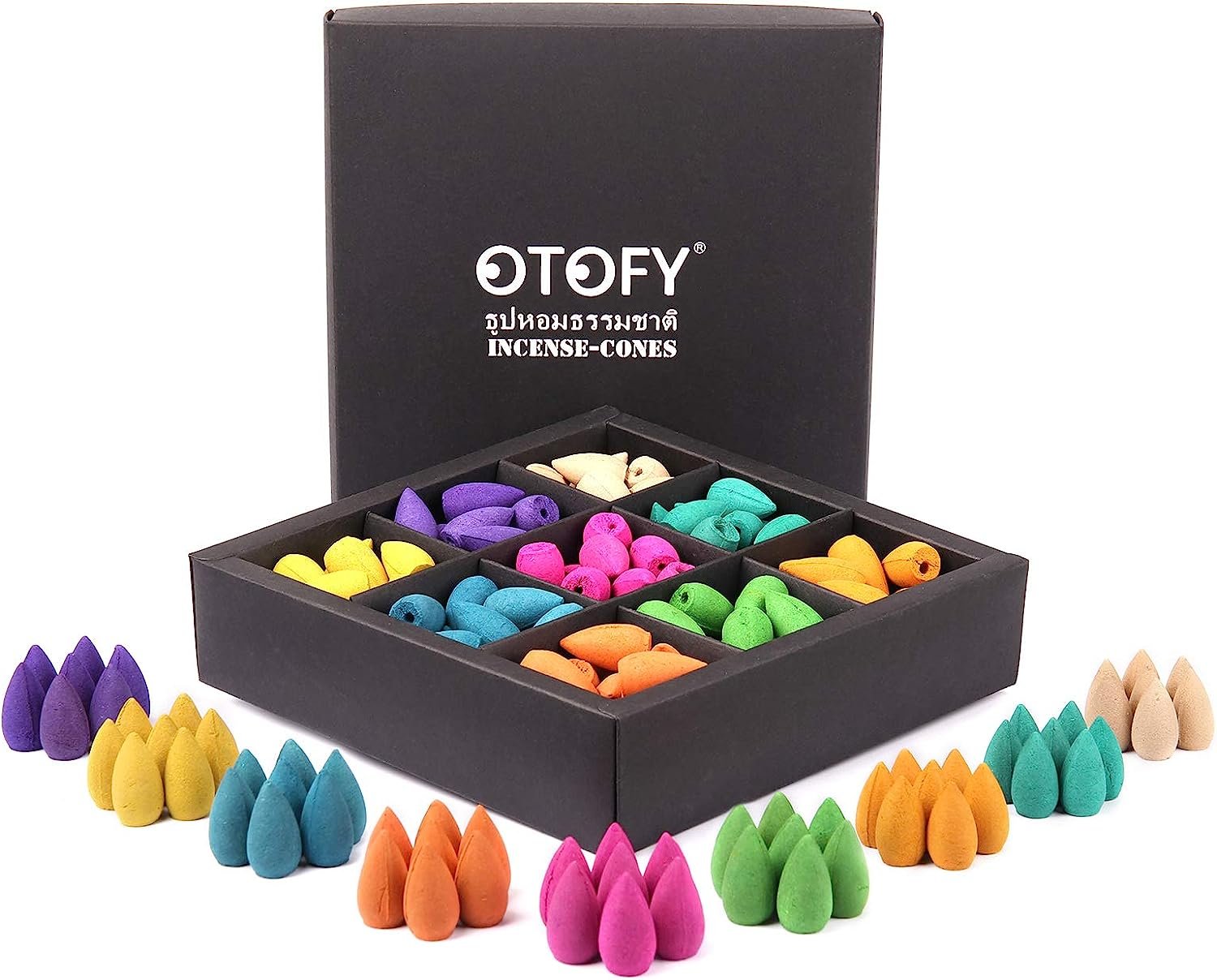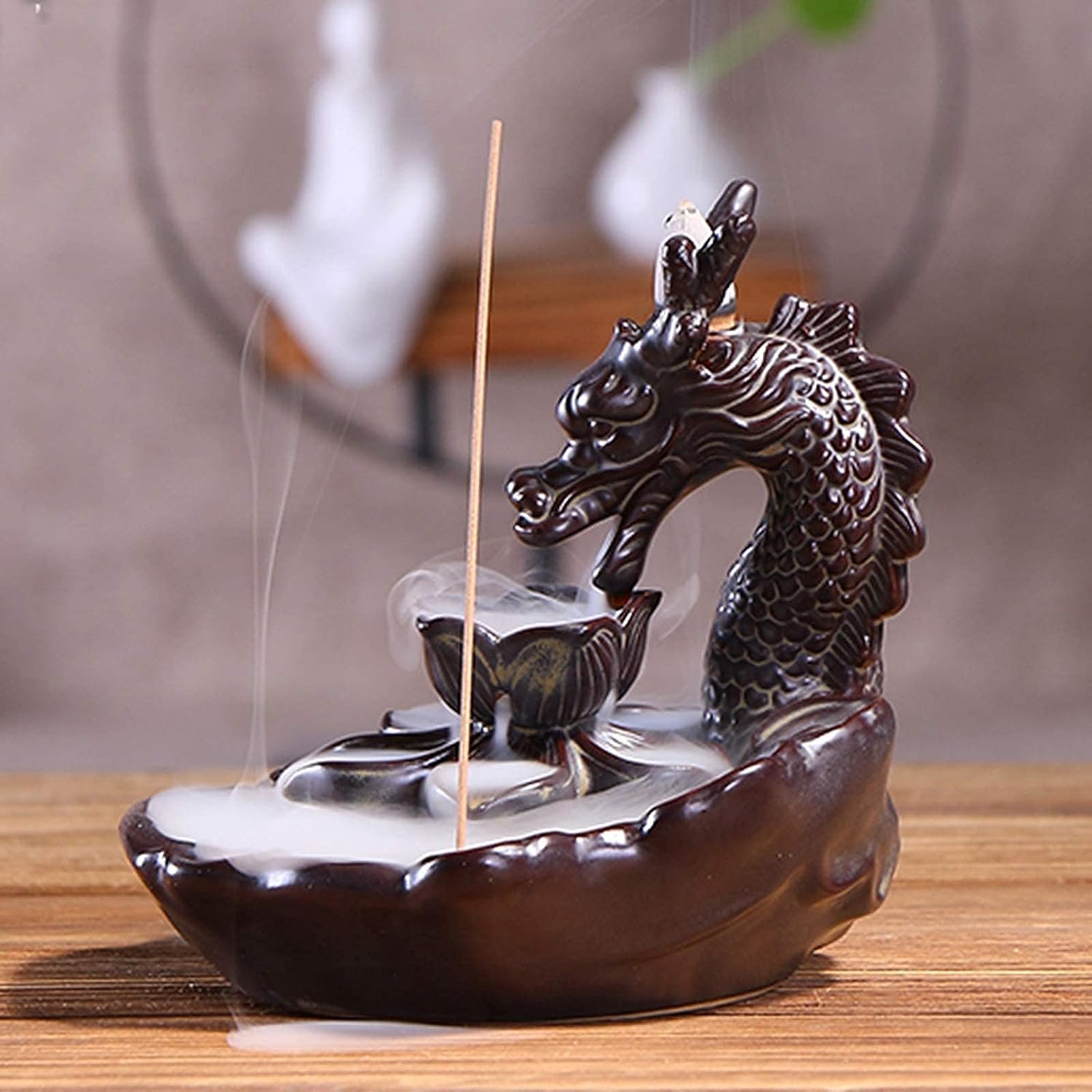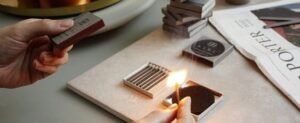Introduction
Backflow incense burners channel smoke downward, creating a mesmerizing waterfall effect unlike traditional incense burners. Their aesthetic appeal and relaxation benefits are gaining them popularity. You might wonder how to use a backflow incense burner effectively. This comprehensive guide covers it all: definition, setup, safety precautions and troubleshooting. Whether you’re an incense newbie or a seasoned enthusiast looking to elevate your experience, this guide is for you. Let’s dive in!
Disclaimer:
We earn a commission at no extra cost to you if you click a link and make a purchase
Table of Contents
What is a Backflow Incense Burner?
A backflow incense burner is no ordinary incense holder. It’s a work of art. Engineered for both visual and aromatic allure, it transforms the act of burning incense into a spectacle. Unlike standard incense burners, this one directs smoke downward. The result is captivating: a waterfall of smoke.
Let’s dive into the technicalities. Specialized engineering intentionally designs a backflow incense burner to channel smoke downward. The burner features a small hole that aligns with another hole in a unique incense cone. Light the cone, position it just right, and witness the magic. Smoke cascades downward, crafting a visual spectacle.
Before You Start: What You’ll Need
Before you embark on this aromatic journey, let’s gather the essentials. Trust me, you don’t want to light up your incense cone only to realize you’re missing something crucial. So, what do you need to get started?
Essential Items
First up, the backflow incense burner itself. Make sure it’s specifically designed for backflow incense cones. A regular incense burner won’t give you the waterfall effect you’re after.
Next, you’ll need backflow incense cones. These aren’t your garden-variety cones; they’re specially designed with a hole in the middle to create that downward flow of smoke. Regular cones won’t work here.
A lighter or matches are also a must. You’ll need a reliable source of flame to get your incense cone burning. No flame, no smoke. It’s that simple.
Lastly, consider the surface you’ll place your burner on. It should be heat-resistant. You don’t want to mar your furniture or, worse, create a fire hazard.
Optional Items
Let’s talk extras. An incense holder can be handy. While many backflow burners come with a built-in holder, an additional one can help you manage multiple cones or simply serve as a backup.
Tweezers can be a lifesaver. They allow you to handle the burning cone safely, especially when you’re trying to align it perfectly with the burner’s hole.
Step-by-Step Guide
You’ve got your essentials. You’re eager to start. But hold on—let’s make sure you do this right. Using a backflow incense burner isn’t complicated, but a few key steps can make all the difference between a mediocre experience and an awe-inspiring one. So, let’s dive into the nitty-gritty.
Step 1: Choose the Right Location
Location matters. First, ensure the area is well-ventilated. Good airflow helps disperse the scent but not so much that it disrupts the smoke flow. Next, safety. Keep the burner away from flammable items like curtains or papers. Finally, the surface. Make sure it’s heat-resistant. You’re setting the stage here, so choose wisely.
Step 2: Prepare the Incense Burner
Cleanliness is next to godliness, especially when it comes to incense burners. Make sure your burner is clean and dry. Any residual ash or moisture can affect both the scent and the smoke flow. Position the burner so it’s level. If it’s tilted, the smoke won’t flow correctly. If you have an ash catcher, place it now. It’s easier to do it before the show starts.
Step 3: Light the Incense Cone
Grab your lighter or matches. Light the tip of the incense cone. Let it burn for about 10 seconds. Then blow out the flame. You want it to smolder, not burn. That’s what produces the smoke you’re after.
Step 4: Place the Incense Cone
Now, the crucial part. Align the hole in the cone with the hole in the burner. This is where tweezers can come in handy. Place it carefully. If it’s not aligned, you won’t get that waterfall effect.
Step 5: Enjoy the Experience
Once the cone is in place, give it a moment. Watch as the smoke starts to flow downward, creating that mesmerizing waterfall effect. Take in the scent. Whether you’re using the incense for meditation, relaxation, or simply to fill your space with a pleasant aroma, now’s the time to enjoy it.
Step 6: Extinguish and Clean
All good things must come to an end. When the cone has burned out, it’s time to clean up. Extinguish any remaining ember. Safety first. Then, remove the ash. A quick clean keeps your burner ready for next time.
Troubleshooting Common Issues
You’ve got the right burner, you’ve chosen your incense, and you’re all set up. But what if things don’t go as smoothly as you’d hoped? Don’t worry; you’re not alone. Even seasoned users encounter issues from time to time. Let’s tackle some of the most common problems you might face and how to solve them.
Smoke Not Flowing Downward
So, you’ve lit your incense cone, but the smoke isn’t flowing downward. Frustrating, right? First, check the quality of your incense cone. Make sure it’s specifically designed for backflow burners. Regular cones won’t cut it. Next, consider airflow. A draft could disrupt the smoke’s natural flow. Finally, check the position of your burner. If it’s not level, you won’t get that mesmerizing waterfall effect.
Weak Scent
You’re getting the visual, but the scent is lacking. What gives? Start by checking the quality of your incense cones. Opt for high-quality, reputable brands. Cheap cones often produce weak scents. Also, consider the room’s ventilation. Too much airflow can disperse the scent too quickly, making it less noticeable.
Difficulty Lighting the Cone
You’re struggling to light the cone. It’s a simple but annoying problem. First, check for moisture. Incense cones should be stored in a dry place. Moisture can make them difficult to light. Second, revisit your lighting technique. Make sure you’re allowing the tip to burn for a few seconds before blowing it out to smolder.
Types of Backflow Incense Burners
You’ve got the basics down, but there’s more to the world of backflow incense burners than meets the eye. These captivating devices come in a variety of materials, each offering its own unique advantages and drawbacks. Whether you’re drawn to the traditional allure of ceramic, the durable nature of metal, the rustic charm of wood, or the intricate designs often found in resin burners, there’s something to suit every preference and lifestyle. Your choice of material can significantly impact not just the aesthetic but also the functionality and safety of your incense-burning experience.
So take the time to explore your options. Consider factors like durability, heat resistance, and design, as well as practical concerns like where you’ll place the burner and how much you’re willing to spend. With a little thought and planning, you can select the perfect backflow incense burner to enhance your aromatic journey. Our article about The Different Types of Backflow Burners helps you find the perfect backflow burner for your situation.
Safety Tips and Precautions
You’re well on your way to becoming a backflow incense burner aficionado. But let’s pause for a moment. Safety should never be an afterthought. Whether you’re a first-timer or a seasoned user, these safety tips and precautions are non-negotiable. They ensure not just a mesmerizing experience, but a safe one.
General Safety
Never leave your incense burner unattended. It’s a fire hazard. Always keep an eye on it. If you have children or pets, place the burner out of their reach. Curiosity can lead to accidents. Also, be mindful of allergies or sensitivities to certain scents. The last thing you want is an allergic reaction.
Material-Specific Precautions
Different materials come with their own sets of precautions. Ceramic burners are fragile. Handle them with care to avoid cracks that could compromise their functionality. Metal burners, on the other hand, can get hot. Allow them time to cool down before touching. Wooden and resin burners are less heat-resistant. Extra caution is needed to prevent any fire risks.
Ventilation and Placement
Good ventilation is crucial but balance is key. Too much airflow can disrupt the smoke’s downward flow. Too little, and you risk concentrating the smoke and scent too much, which could be overwhelming or even hazardous. Place your burner in a location where the air circulates well but doesn’t blow directly on the burner.
Allergies and Sensitivities
If you or anyone in your household has allergies or sensitivities, choose your incense carefully. Opt for natural, hypoallergenic options when possible. And always, always do a patch test first. Light the incense for a short period and see if anyone reacts before going for a full session.
Conclusion
You’ve journeyed through the ins and outs of using a backflow incense burner, from the basics of setup to the nuances of different materials and troubleshooting common issues. The goal? To transform a simple act into an extraordinary experience. With the right burner, quality incense, and a touch of know-how, you’re not just lighting incense—you’re creating an atmosphere. You’re setting the stage for relaxation, focus, or whatever mood you wish to invoke. So go ahead, light that cone, and let the aromatic journey begin. Remember, the key to a fulfilling, aromatic experience lies not just in the materials you choose, but also in the care and attention you give to each step of the process.
Disclaimer:
We earn a commission at no extra cost to you if you click a link and make a purchase
Frequently Asked Questions (FAQs)
Can I Use Regular Incense Cones?
No, regular incense cones won’t work for a backflow incense burner. They lack the special design needed to create the downward flow of smoke. Stick to cones specifically designed for backflow burners.
How Often Should I Clean My Burner?
Cleaning frequency can vary based on usage, but a good rule of thumb is to clean your burner after every use or at least once a week. Regular cleaning prevents ash buildup and ensures optimal performance.
Is It Safe to Use Indoors?
Yes, it’s generally safe to use a backflow incense burner indoors, but make sure the area is well-ventilated. Good airflow helps disperse the scent and smoke, making for a more enjoyable and safer experience.
What If the Smoke Doesn’t Flow Downward?
If the smoke isn’t flowing downward, check a few things: the quality of your incense cone, the levelness of your burner, and the room’s airflow. Any of these factors could disrupt the smoke’s downward flow.
Where Can I Buy Quality Incense Cones?
Quality incense cones are available at specialty stores, some health food shops, and online retailers. Look for reputable brands known for high-quality, natural ingredients.


